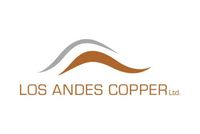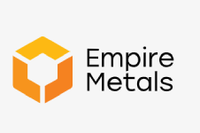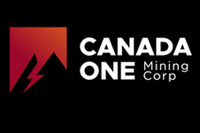Gold vs. Copper: Which Metal Will Shine Brighter in 2025?
Experts discussed at a PDAC panel whether copper or gold will perform the best this year.

At the 2025 Prospectors & Developers Association of Canada (PDAC) convention, the panel “Copper vs. Gold: Which Metal Will Outperform?” tackled the question of which metal holds greater investment potential.
Moderated by Gracelin Baskaran, director of the Critical Minerals Security program at the Center for Strategic and International Studies, the discussion brought together industry experts to weigh the risks and rewards of both commodities.
Last year, gold and copper crossed key price milestones, with gold surging past US$2,700 per ounce and copper exceeding US$5 per pound. While gold is primarily seen as a financial safe haven in times of geopolitical uncertainty, copper is an essential industrial metal, increasingly central to resource nationalism and critical mineral security.
For investors, both metals present opportunities, but understanding their distinct market drivers remains crucial.
Gold and copper’s shared influences
Over the past several years, global uncertainty has been fueling an unprecedented run in the gold price.
Among the factors have been high inflation in the fallout of the COVID-19 pandemic, a three-year war between Russia and Ukraine, conflict between Israel and Gaza that has threatened to spread throughout the Middle East and economic instability sparked by the US under President Donald Trump.
Many of these same issues are impacting the copper market. COVID-19 caused spikes in inflation that have impacted a downturn in real estate development worldwide, while shipping routes have had to be altered to avoid conflict zones. Most recently, US tariffs could upend a variety of industries around the world, including the US housing market.
While these influences largely affect the demand side of commodities, the supply side is also being affected similarly. Most notably, declining grades for both copper and gold are driving up overall mining costs and ultimately eating into corporate balance sheets.
The case for copper
The biggest strength for investors in the copper sector is the supply-and-demand situation.
While copper demand growth has only slightly increased in the past few years, it has been largely held back by weakness in the Chinese real estate sector, which is traditionally one of the largest demand drivers for copper.
Despite this, demand is increasingly coming from rapid urbanization as the global population grows and younger people move to cities from rural areas at higher rates than previous generations. Additionally, demand from the tech sector is also up in several areas, including energy transition, artificial intelligence, and data centers.
Frank Nikolic, vice president of battery and base metals at CRU North America, explained that this demand was critical to copper’s value over the next few years.
“Prior to 1990 we had relatively flat or slow growing intensity of copper use per person on the planet. Then after 1990 when the world opened up with the departure of communism from the global stage, in a big way, we’ve seen the massive exposure from computers, the internet boom, the China miracle, I call it the great urbanization, and then finally the last five years or more decarbonization,” he said.
Nikolic suggested that recent growth in copper markets is owed to growth in China, but over the next five years that will begin to shift as there is increased demand from decarbonization technologies.
He also pointed to increasing wealth in the global south, specifically Indonesia, India and South America that will provide additional demand for copper.
Nikolic also acknowledged that while copper will remain in a supply-and-demand surplus over the next year, it will begin shifting into a deficit position. This will require 6 to 8 million metric tons to be added to the market over the next 10 years, but there will be significant challenges to meeting that demand.
“The filling of the demand gap is going to be a lot more expensive than in the past. We’ve seen a massive explosion of capital costs for copper, both greenfield and brownfield, and the cost to operate these assets is also increasing,” he said.
These rising costs are also being met with declining grades and depleting deposits that will require US$100 million per year just to maintain current demand growth. Nikolic also suggests that scrap substitution isn’t likely to provide much relief, noting that it's barely keeping up with demand as it is.
David Strang, executive chairman of Ero Copper (TSX:ERO,NYSE:ERO), supported Nikolic’s views, particularly on the expansion of the global south, by providing a history of how technology impacted copper in the mid-20th century.
There was a shift beginning in the late 1940s, when homes in the West stopped having milk delivered and instead went to the grocery stores. The advent of refrigeration reduced the necessity for daily deliveries.
Adding this new technology required copper not only in the refrigerator itself but also in the electrical demands on homes and stores.
Strang pointed to India and Indonesia, which have growing economies and an expanding middle class. However, many are still without what the West would call necessities like cell phones and refrigeration.
He sees a fundamental imbalance in the copper market as this newfound wealth drives demand growth not seen since the middle of the last century.
“So here is the thing: Copper is in crisis. If the world is going to continue to where it needs to be with these economies, we need to find more copper. There are only two things that are going to affect that. One is technology, and the other is the metal price has to go up because we cannot continue to live the way we want to live with regards to the other countries that are growing as quickly as they’re growing,” Strang said.
The case for gold
Moving away from the red metal, panelist Jason Attew, president and CEO of Osisko Gold Royalties (TSX:OR,NYSE:OR), argued for investing in gold.
Marking a stark difference between the fundamentals of copper and gold, Attew pointed out that copper was largely influenced by supply and demand. He questioned if copper would be in as strong a position if the US were to go bankrupt, which he sees as a distinct possibility.
He noted that the US has US$36.5 trillion in federal debt versus US$29.1 trillion in gross domestic product (GDP), a debt-to-GDP ratio of 125 percent.
“This is the highest level since the end of World War Two … This translates to over US$650,000 per US family. It’s just remarkable. This ratio has climbed steadily since the pandemic began in 2020 when the federal government debt was approximately US$20 trillion and GDP was US$21 trillion,” he said.
Attew suggests that the pandemic and the subsequent stimulus raised inflation, requiring the US Federal Reserve to raise interest rates.
The broad picture he painted is one of the US economy on the edge of a cliff with few solutions. One possible remedy presented by Attew is to increase the money supply, but that would come with the caveat of devaluing the dollar strength, which is where his backing of gold comes in.
“Everyone knows that US dollar strength has an inverse correlation with the price of gold in real terms, all of which is very constructive for gold. So even if it’s not as doom and gloom as I said… we’re headed to a recession in the US, and it’s very challenging or difficult to see how a soft landing is going to happen here,” Attew said.
Lawson Winder, senior metals and mining research analyst with Bank of America (NYSE:BOC) Securities, agreed with Attew but added that gold was also more attractive beyond what was happening in the United States and that it provides a tangible asset in times of uncertainty.
This has led to enormous purchases by central banks, which Winder suggests is at its highest point in history. It has also led to retail purchases by Chinese and Indian consumers seeing the highest increases he’s ever seen. However, these increases in gold buying have yet to materialize with Western investors, but Winder thinks that will change.
“As the confusion with Trump and tariffs takes hold, we think Western investors will increasingly want to own more physical gold and will likely express it through these means, and will ultimately contribute to a higher gold price,” he said.
What does it mean for investors?
Both copper and gold hold their advantages and risks, and the panelists made effective cases for each metal.
The world is living through economic and geopolitical uncertainty, causing investors to turn to gold to maintain balance in their portfolios and reduce risk. Gold is unlikely to change its status as a haven asset in the near future.
The presenters also made a case for copper based on its fundamentals. Copper is a necessary commodity that powers a world that needs more electricity. Demand is up, and supply is becoming more expensive and harder to find.
Conversely, gold offers investors more options, from physical and paper ownership to equities and ETFs, while copper is largely limited to just equities and a small number of ETFs.
Ultimately, the case for both metals is strong, and given the global situation, both could provide investors with excellent opportunities in 2025.
Click here to view the Investing News Network's PDAC playlist on YouTube.
Don't forget to follow us @INN_Resource for real-time updates!
Securities Disclosure: I, Dean Belder, hold no direct investment interest in any company mentioned in this article.






